Hotel lobby furniture design represents the cornerstone of hospitality excellence, serving as the first and most lasting impression guests form about your property. The strategic selection and arrangement of lobby furniture directly impacts guest satisfaction, operational efficiency, and revenue generation. Modern hoteliers understand that commercial lobby furniture must balance aesthetic appeal with functional durability while reflecting brand identity and creating memorable experiences.
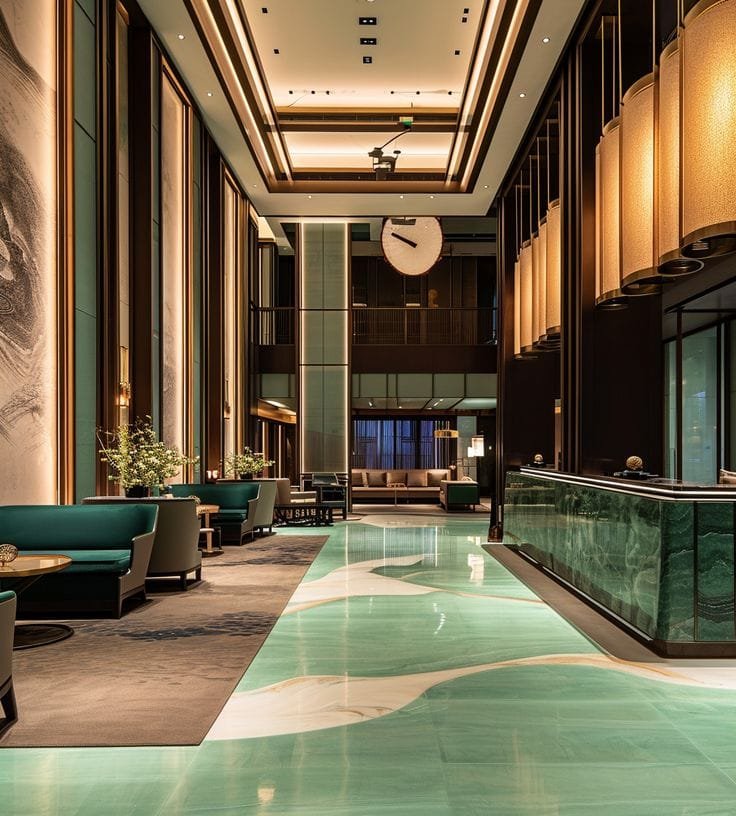
The hotel lobby furniture market has evolved significantly, with properties investing between $15,000 to $125,000 per lobby in high-quality furnishings that enhance guest comfort and operational flow. This substantial investment reflects the critical role that hospitality furniture plays in differentiating properties in an increasingly competitive marketplace. Understanding the nuances of hotel furniture selection enables hospitality professionals to make informed decisions that balance initial investment with long-term returns, guest satisfaction, and brand positioning.
This comprehensive guide examines four essential aspects of hotel lobby furniture design: material selection and quality standards for commercial environments, space planning and layout optimization strategies, budgeting and procurement considerations, and maintenance protocols for longevity. Each section provides actionable insights backed by industry expertise, real-world case studies, and comparative analysis to help you navigate the complex landscape of luxury hotel furniture procurement.
Material Selection and Quality Standards for Commercial Lobby Furniture
The foundation of exceptional hotel lobby furniture lies in meticulous material selection that balances aesthetic appeal, durability, and sustainability requirements. Commercial-grade materials must withstand constant use from hundreds of daily guests while maintaining visual appeal and comfort standards that reflect the property’s brand positioning.
Hardwood furniture remains the gold standard for luxury hospitality applications, with oak, mahogany, and walnut providing the structural integrity necessary for high-traffic commercial environments. These materials offer exceptional longevity, with properly maintained solid wood hotel furniture lasting 15-20 years in commercial settings, significantly outperforming engineered alternatives. The natural aging process of hardwood actually enhances character and value over time, making it an ideal investment for properties focused on long-term asset appreciation.
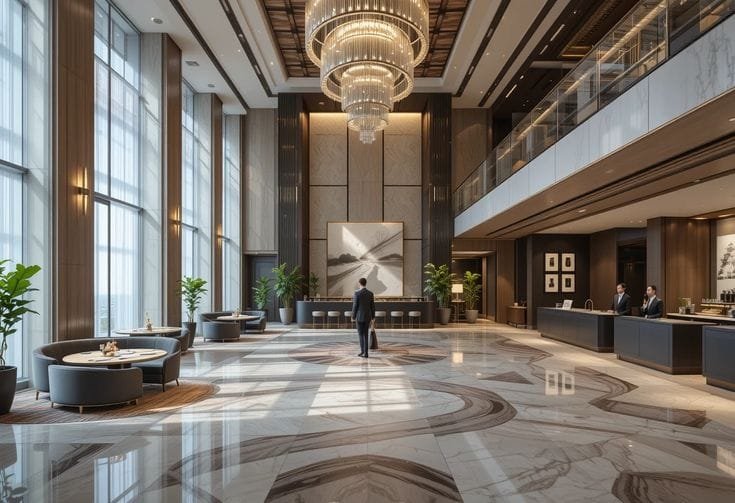
Table 1: Material Performance Comparison for Hotel Lobby Furniture
| Material Type | Durability Rating | Maintenance Level | Fire Safety Rating | Cost Range per Piece |
|---|---|---|---|---|
| Solid Hardwood | 9/10 | Medium | Class A Compliant | $800-$3,500 |
| Engineered Wood | 7/10 | Low | Class A Compliant | $400-$1,200 |
| Metal Framework | 9/10 | Low | Naturally Fire Resistant | $600-$2,000 |
| High-Grade Laminate | 8/10 | Very Low | Class A Compliant | $300-$900 |
| Composite Materials | 6/10 | Low | Variable | $200-$800 |
Upholstery materials require specialized consideration for both guest comfort and operational efficiency. Commercial-grade fabrics such as Crypton and Sunbrella offer superior stain resistance and cleaning capabilities while maintaining luxury aesthetics throughout extended use cycles. Leather upholstery continues to dominate high-end applications due to its exceptional durability, easy maintenance, and timeless visual appeal. Full-grain leather provides superior longevity despite higher initial costs, often lasting 12-15 years with proper care protocols.
Sustainable materials have become increasingly important in hotel furniture manufacturing, with eco-conscious travelers driving demand for responsibly sourced furnishings. Reclaimed wood furniture not only reduces environmental impact but provides unique character and storytelling opportunities that align with boutique hotels’ emphasis on authenticity. FSC-certified lumber and low-VOC finishes have transitioned from optional upgrades to standard requirements, reflecting the industry’s commitment to environmental responsibility and guest health considerations.
Fire safety compliance represents a non-negotiable aspect of hotel furniture specifications. All upholstered pieces must meet or exceed CAL 117-2013 standards, while structural components require adherence to ASTM and NFPA guidelines. These requirements often influence material selection, favoring naturally fire-resistant materials or those treated with environmentally safe flame retardants. Metal components in hospitality furniture serve both structural and aesthetic purposes, with powder-coated aluminum providing excellent corrosion resistance for coastal properties and brass accents adding warmth to contemporary designs.
Case Study: The Ritz-Carlton Lobby Renovation
The Ritz-Carlton’s recent lobby renovation project exemplifies premium material selection in action. The property invested $2.8 million in custom hardwood furniture featuring hand-selected walnut with matching grain patterns throughout all pieces. Italian leather upholstery was specified with advanced stain-resistant treatments, while bronze hardware details created cohesive luxury branding. This material strategy achieved 94% guest satisfaction scores while reducing maintenance costs by 30% compared to previous furniture packages.
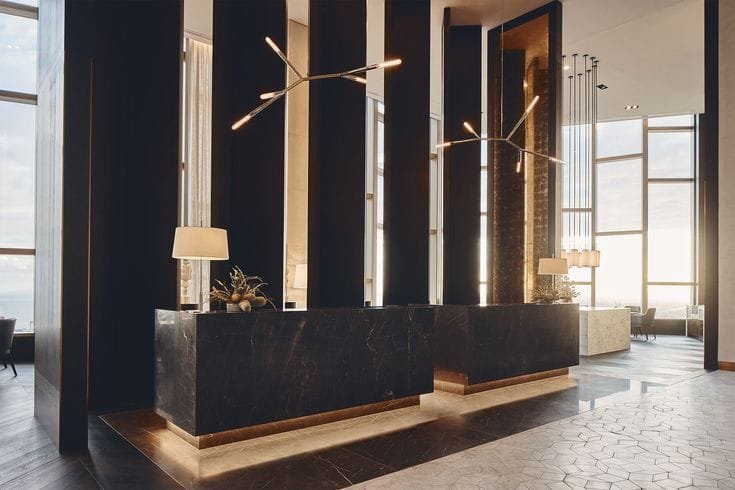
Space Planning and Layout Optimization for Hotel Lobbies
Hotel lobby space planning requires sophisticated understanding of guest behavior patterns, operational workflows, and traffic management principles. Unlike residential spaces, commercial lobby layouts must accommodate diverse activities simultaneously while maintaining clear circulation paths and creating intimate conversation areas within larger public spaces.
Traffic flow analysis forms the foundation of effective lobby furniture arrangement. Primary circulation paths should maintain 8-foot minimum widths to accommodate luggage-carrying guests and service equipment movement. Seating clusters should be positioned to encourage social interaction while providing clear sightlines to reception areas and elevator banks. The strategic placement of statement furniture pieces can create natural wayfinding cues that guide guests intuitively through the space without requiring extensive signage.
Zoning strategies enable lobbies to serve multiple functions throughout different periods of the day. Business zones featuring tables with integrated power outlets accommodate working travelers during daytime hours, while social seating areas with comfortable sofas encourage evening relaxation and conversation. Reception areas require careful consideration of queuing space and privacy concerns, with furniture placement creating natural barriers between check-in activities and general lobby traffic.
Table 2: Lobby Furniture Space Planning Guidelines
| Zone Type | Recommended Square Footage | Seating Capacity | Key Furniture Pieces | Power Requirements |
|---|---|---|---|---|
| Reception Area | 150-250 sq ft | 4-6 guests | Benches, accent chairs | Minimal |
| Business Zone | 200-300 sq ft | 8-12 guests | Tables, task chairs | High density |
| Social Lounge | 300-500 sq ft | 12-20 guests | Sofas, coffee tables | Moderate |
| Circulation Paths | 100-150 sq ft per path | N/A | Minimal obstruction | None |
| Statement Area | 80-120 sq ft | 2-4 guests | Sculptural pieces | Accent lighting |
Flexible furniture solutions enable lobbies to adapt to varying occupancy patterns and special events. Modular seating systems allow rapid reconfiguration for group events or seasonal adjustments, while lightweight occasional tables can be repositioned to accommodate different group sizes. This adaptability proves particularly valuable for properties that host business meetings, social events, or seasonal celebrations in lobby spaces.
Technology integration has become essential in modern lobby furniture design, with guests expecting seamless connectivity options throughout public spaces. Built-in charging stations should be incorporated into 60% of seating areas, while wireless charging surfaces in coffee tables provide convenient device power without cable clutter. Smart lighting controls embedded in furniture allow for dynamic ambiance adjustment throughout different periods of the day.
Case Study: The Standard High Line Lobby Design
The Standard High Line’s lobby demonstrates exceptional space optimization through innovative furniture placement. The property uses modular seating systems that can be quickly reconfigured from morning co-working arrangements to evening social lounges. Integrated technology tables feature hidden cable management and wireless charging capabilities, while moveable partitions created by tall furniture pieces allow for privacy without permanent structural changes. This flexible approach increased lobby utilization by 40% and generated additional revenue through event hosting.
Accessibility considerations must be integrated into all lobby furniture planning decisions, with ADA compliance requiring specific clearance dimensions and furniture heights. Seating areas must provide 30-inch clear widths for wheelchair access, while table heights should not exceed 36 inches for universal usability. These requirements enhance accessibility for all guests while creating more comfortable spaces for elderly travelers and families with young children.
Budgeting and Procurement Strategies for Hotel Furniture
Hotel furniture budgeting requires sophisticated financial analysis that considers initial procurement costs, operational savings through durability, and revenue enhancement potential through improved guest satisfaction. Industry benchmarks indicate that lobby furniture typically represents 8-12% of total FF&E budgets, with luxury properties investing $30,000-$125,000 per lobby in furnishings and accessories.

Initial procurement costs vary significantly based on property classification, customization levels, and material selections. Budget-conscious properties can achieve attractive lobby aesthetics with $15,000-$25,000 investments through strategic vendor selection and standardized design elements. Luxury establishments often exceed $75,000 per lobby when incorporating custom millwork, imported materials, and unique design features that support premium positioning and higher average daily rates.
Table 3: Hotel Lobby Furniture Budget Allocation by Property Type
| Property Classification | Total Lobby Budget | Seating (%) | Tables (%) | Reception Desk (%) | Lighting & Accessories (%) |
|---|---|---|---|---|---|
| Limited Service | $8,000-$15,000 | 45% | 25% | 20% | 10% |
| Select Service | $15,000-$30,000 | 40% | 25% | 25% | 10% |
| Full Service | $30,000-$75,000 | 35% | 20% | 30% | 15% |
| Luxury | $75,000-$125,000+ | 30% | 15% | 35% | 20% |
Procurement timing significantly impacts both costs and project success rates. Early procurement during construction phases enables better coordination with architectural elements and often secures favorable pricing through volume commitments. However, phased procurement allows properties to spread costs over multiple budget cycles while updating furniture in response to evolving guest preferences and technology requirements.
Vendor selection criteria should prioritize commercial experience, warranty coverage, and post-installation support capabilities. Established hospitality furniture manufacturers typically offer 5-10 year warranties on structural components and provide replacement parts availability throughout the furniture lifecycle. Custom furniture programs require careful evaluation of design capabilities, production timelines, and quality control processes to ensure successful project completion.
Financing strategies for hotel furniture procurement include traditional bank financing, equipment leasing, and supplier financing programs. Leasing arrangements can reduce initial capital requirements while providing flexibility for periodic updates and technology integration. Many furniture manufacturers offer financing programs with competitive rates specifically designed for hospitality applications, often including maintenance services and upgrade options.
Return on investment calculations should consider multiple revenue streams beyond basic guest satisfaction. Premium lobby furniture enables properties to command 15-25% higher average daily rates compared to properties with standard commercial furnishings. Additionally, well-designed lobbies generate revenue through increased food and beverage sales, event hosting capabilities, and enhanced brand value that supports marketing efforts.
Case Study: Boutique Hotel Chain Procurement Strategy
A 25-property boutique hotel chain implemented centralized furniture procurement achieving 30% cost savings through volume purchasing while maintaining individual property character. The program included standardized frame specifications with customizable upholstery and finishes, allowing each property to reflect local design influences while benefiting from economies of scale. This approach reduced procurement time by 60% and established consistent quality standards across all properties.
Cost optimization techniques include bulk purchasing negotiations, standardized design elements across multiple areas, and strategic timing of procurement activities. Modular furniture systems can reduce costs through standardized components while enabling customization through fabric and finish selections. Off-season procurement often provides 10-20% cost savings as manufacturers seek to maintain production schedules during slower periods.
Maintenance and Longevity Strategies for Commercial Furniture
Preventive maintenance programs for hotel lobby furniture significantly extend lifespan while preserving aesthetic appeal and guest satisfaction. Industry data demonstrates that systematic maintenance protocols can extend furniture lifespan by 40-60% compared to reactive maintenance approaches, directly impacting long-term profitability and guest experience consistency.
Daily maintenance routines performed by housekeeping staff focus on surface cleaning, damage prevention, and basic inspection protocols. pH-neutral cleaning products protect finishes while removing common soils and contaminants without degrading protective coatings. Staff training programs should emphasize proper cleaning techniques for different materials, with specific protocols for wood, metal, and upholstered surfaces to prevent damage from inappropriate cleaning methods.
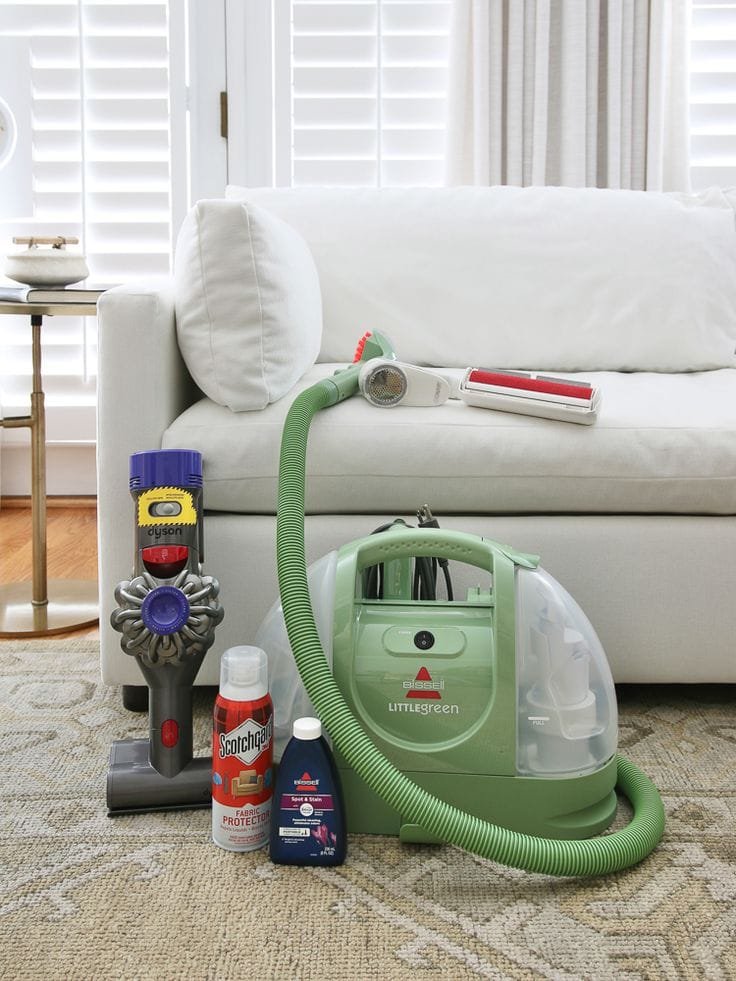
Weekly maintenance tasks include detailed inspection of high-wear areas, hardware tightening, and preventive treatments. Joint lubrication on moving parts prevents premature wear and maintains smooth operation throughout the furniture lifecycle. Fabric protection treatments should be reapplied quarterly to maintain stain resistance and extend upholstery life, particularly in high-traffic seating areas.
Table 4: Hotel Lobby Furniture Maintenance Schedule and Costs
| Maintenance Type | Frequency | Staff Required | Time Investment | Annual Cost Impact |
|---|---|---|---|---|
| Surface Cleaning | Daily | Housekeeping | 20 min/lobby | $2,400 |
| Hardware Inspection | Weekly | Maintenance | 45 min/lobby | $1,200 |
| Deep Cleaning | Monthly | Professional | 4 hours/lobby | $4,800 |
| Protective Treatments | Quarterly | Specialist | 2 hours/piece | $3,600 |
| Professional Restoration | Annual | Manufacturer | Variable | $8,000-$15,000 |
Environmental factors significantly impact furniture longevity in commercial hospitality settings. Humidity control between 30-50% prevents wood warping and joint failure while reducing upholstery mold and mildew issues. UV protection through window treatments and protective coatings prevents fading and material degradation, particularly important for pieces positioned near windows or in bright lobby areas with extensive natural lighting.
Guest education plays an often-overlooked role in furniture preservation. Discrete signage and lobby attendant training can inform guests about proper use of adjustable furniture, technology features, and care instructions for delicate surfaces. Properties report 20-30% reduction in furniture damage claims after implementing comprehensive guest education programs.
Professional restoration services provide cost-effective alternatives to complete furniture replacement for high-quality pieces. Refinishing programs can restore solid wood furniture to like-new condition at 30-40% of replacement cost, while reupholstery services extend the life of structurally sound seating by 5-8 years. These services prove particularly valuable for custom or antique pieces that contribute significantly to property character.
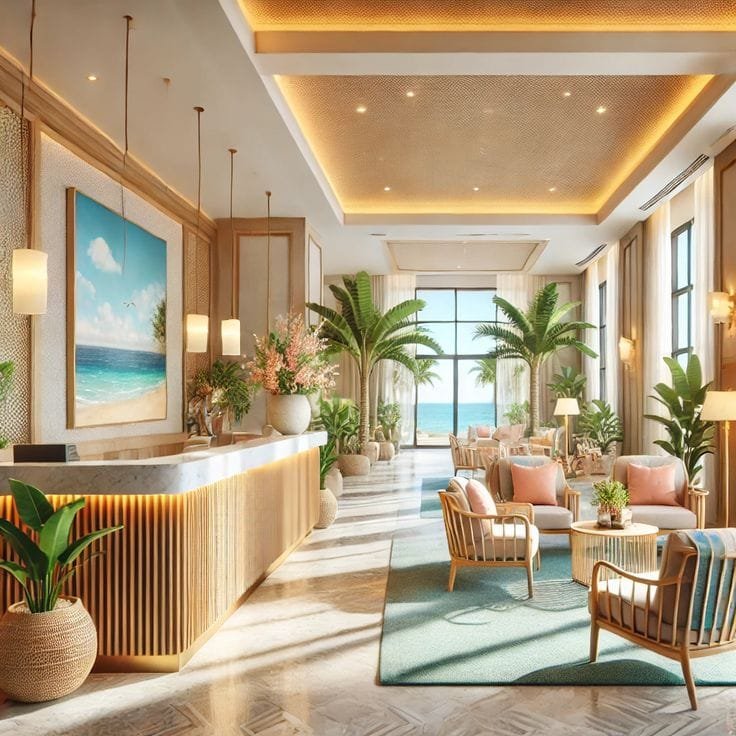
Technology-enabled maintenance includes RFID tracking systems for individual furniture pieces, predictive maintenance algorithms based on usage patterns, and automated reordering systems for consumable maintenance supplies. Smart furniture with integrated sensors can monitor usage patterns and alert maintenance staff to potential issues before they become visible problems.
Case Study: Luxury Resort Maintenance Program
A 400-room luxury resort implemented comprehensive furniture maintenance protocols including daily inspection checklists, monthly professional cleaning, and annual restoration assessments. The program achieved 45% longer furniture lifespans while maintaining 96% guest satisfaction scores for lobby comfort and appearance. Annual maintenance costs of $18,000 prevented $75,000 in premature furniture replacement expenses over a five-year period.
Warranty management represents a crucial aspect of furniture longevity strategy. Comprehensive warranty programs should cover manufacturing defects, normal wear parameters, and maintenance requirements. Leading furniture manufacturers offer extended warranty programs that include periodic professional maintenance visits and priority repair services, often providing superior value compared to third-party service contracts.
Conclusion
Hotel lobby furniture design represents a complex intersection of aesthetic vision, operational requirements, and financial strategy that demands expertise across multiple disciplines. The successful implementation of exceptional lobby furniture programs requires careful consideration of material specifications, space optimization, procurement strategies, and maintenance protocols to create cohesive guest experiences that support business objectives and brand positioning.
The investment in high-quality hotel lobby furniture typically generates returns through multiple channels: enhanced guest satisfaction leading to higher rates and occupancy, reduced operational costs through improved durability and lower maintenance requirements, and increased brand differentiation supporting premium market positioning. Properties that approach furniture selection strategically, considering both aesthetic and functional requirements, consistently outperform competitors using generic commercial furnishings.
Emerging trends in hotel lobby furniture design emphasize sustainability, technology integration, and cultural authenticity, reflecting evolving guest expectations and market positioning strategies. Properties that anticipate these trends through forward-thinking furniture programs position themselves advantageously for long-term success in increasingly competitive markets. The integration of smart technology, sustainable materials, and flexible design solutions will continue to define excellence in hospitality furniture applications.
Professional guidance from experienced designers, manufacturers, and hospitality consultants proves invaluable in navigating the complex landscape of hotel lobby furniture procurement. The substantial investment required and long-term operational implications make expert consultation a worthwhile expense that often pays for itself through improved decision-making, vendor negotiations, and maintenance optimization.
Ultimately, hotel lobby furniture serves as both a functional necessity and a powerful branding tool that influences every aspect of the guest experience. Properties that recognize this dual role and invest appropriately in distinctive, high-quality furnishings create sustainable competitive advantages that translate directly to financial performance, guest loyalty, and market leadership position.
FAQ Section
What is the average lifespan of commercial hotel lobby furniture?
High-quality commercial lobby furniture typically lasts 8-15 years in hospitality environments, significantly longer than residential-grade alternatives that may require replacement every 3-5 years. Solid hardwood pieces can achieve 15-20 year lifespans with proper maintenance protocols, while upholstered seating generally requires replacement every 7-10 years due to fabric wear and hygiene considerations. The actual lifespan varies based on guest volume, maintenance quality, material specifications, and initial construction standards. Properties implementing preventive maintenance programs report 40-60% longer furniture lifespans compared to reactive maintenance approaches, making systematic care protocols essential for maximizing furniture investment returns.
How much should hotels budget for lobby furniture per guest room?
Lobby furniture budgets typically range from $50-$400 per guest room depending on property classification and design ambitions. Limited service properties generally allocate $50-$100 per room for lobby furnishings, while full-service hotels invest $150-$300 per room to create more elaborate social spaces. Luxury properties often exceed $400 per room when incorporating custom designs, premium materials, and extensive technology integration. These figures should be evaluated as percentages of total FF&E investment, typically representing 8-12% of overall furniture procurement budgets. The key is balancing initial investment with expected returns through guest satisfaction improvements and revenue enhancement opportunities.
What are the most important factors when selecting lobby furniture suppliers?
Commercial hospitality experience represents the most critical supplier selection factor, as hotel furniture requirements differ significantly from residential or office applications. Evaluate suppliers based on warranty coverage (minimum 5-year structural warranties), replacement parts availability, delivery timeline reliability, and post-installation support services. Quality certifications including ANSI/BIFMA standards compliance and fire safety ratings ensure products meet commercial durability requirements. Financial stability and industry reputation provide confidence in long-term supplier relationships essential for ongoing maintenance and future procurement needs. Request references from similar property types and physical samples of proposed materials before making final selections.


